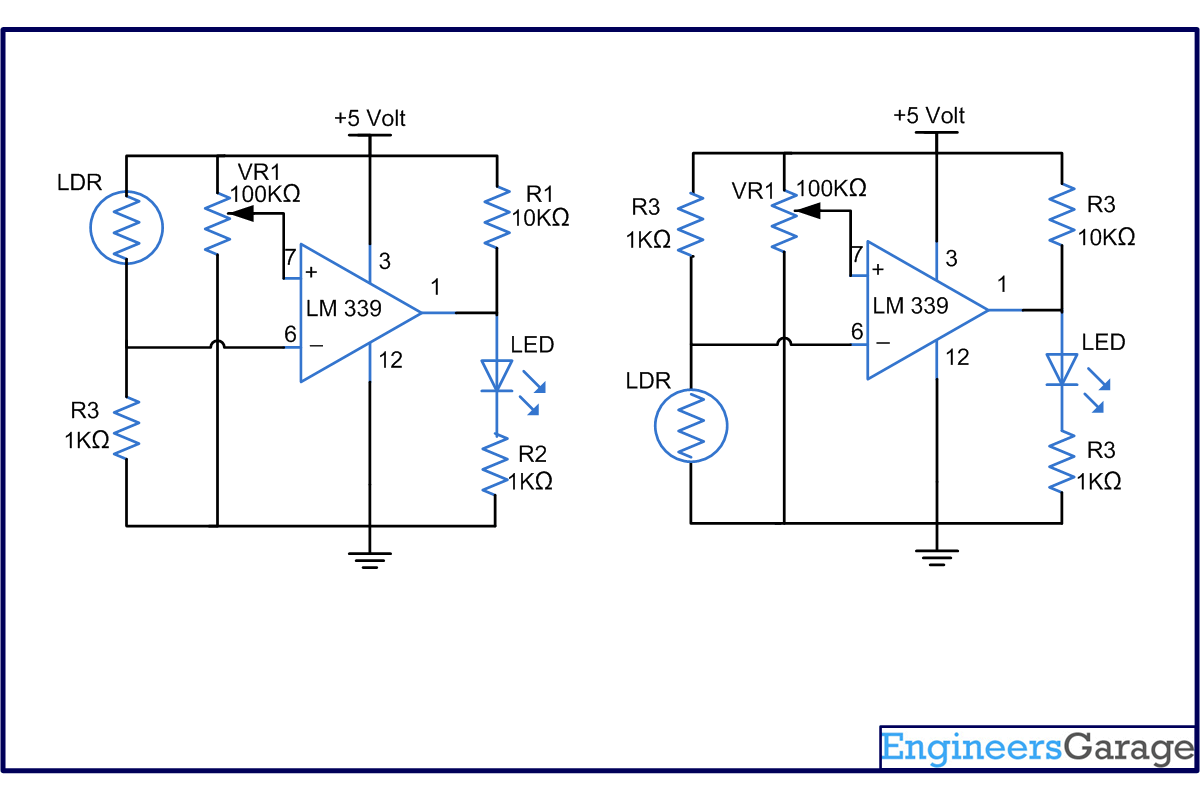Automatic light/dark activated systems have very common utilities in day to day life. For example, street lighting at night, morning alarm, automatic emergency light, dark activated buzzers and so on. The project explained here can be used in several such systems. This circuit has a sensor component which works in response to the ambient light condition. The output of this sensor is compared with a set reference value and whenever the light condition changes from dark to light or light to dark, the output goes high.
In this project, the surrounding illumination is observed by a light dependent resistor (LDR) which acts as a sensor for the circuit. The voltage drop across this LDR corresponds to a particular intensity of light. This value can be taken at the inverting input of a comparator of LM339 (at pin6). The resistor R3 (1k![]() ), along with LDR, forms a potential divider at this input. The non-inverting input (pin7) is connected to a variable resistor (preset) which is used to set the reference voltage of the comparator.
), along with LDR, forms a potential divider at this input. The non-inverting input (pin7) is connected to a variable resistor (preset) which is used to set the reference voltage of the comparator.
A comparator works on the principle that its output remains high as long as the non-inverting input is at higher level than that at its inverting input. Here, the output (pin1) is connected to an LED. This concept can be utilized in two configurations (night activation and day activation, respectively) by changing the positions of R3 and LDR as shown the circuit diagrams. The reference voltage is set to correspond to a light intensity between day and night. A preset VR1 (100k![]() ) is used which is set to a value of 10k
) is used which is set to a value of 10k![]() . The resistance of LDR varies between 1k
. The resistance of LDR varies between 1k![]() and 1M
and 1M![]() when it is bright and dark, respectively.
when it is bright and dark, respectively.
In the first case, the LED will glow when LDR is completely dark, i.e., very less light falls on it. In such a condition, the resistance of LDR is higher than that offered by the preset. This causes a lower potential at pin6 than that at pin7 and so the output goes high thus lighting the LED. The second case is exact opposite to this. This time pin6 goes lower than pin7 when the LDR receives bright light.
Circuit Diagrams
Project Components
Filed Under: Electronic Projects



Questions related to this article?
👉Ask and discuss on Electro-Tech-Online.com and EDAboard.com forums.
Tell Us What You Think!!
You must be logged in to post a comment.